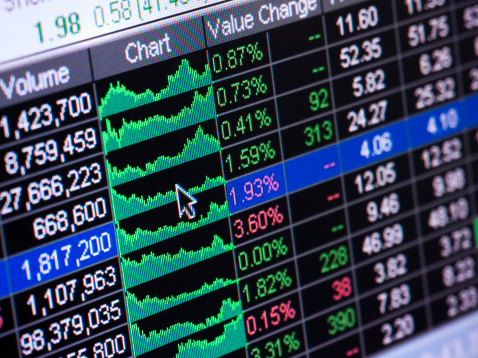
While people in Silicon Valley have been arguing over whether we’re seeing another tech bubble–a debate that has been burning for the past ten years–they may have missed the real stock bubble driven by tech mania: China’s red-hot stock exchanges.
The Shanghai Stock Exchange Composite Index is up 149% over the past year, while the Shenzhen Stock Exchange Composite Index is up 190%. The Nasdaq Composite, the historical proxy for publicly traded US tech companies, has risen 16% in that time.
And what about the private markets that have given huge valuations to US tech companies like Uber? A year ago, Uber raised money at a $18 billion valuation, and now investors are close to valuing it near $50 billion. That’s a 175% increase in a year, and it very well may be a sign that investors are acting irrationally.
But there’s a difference between irrational–which happens often enough even in healthy markets–and outright madness. Consider Beijing Baofeng Technology, a maker of virtual-reality headsets that has become something of a poster child for the Shenzhen bubble because of its outsize valuation. Beijing Baofeng went public in late March and has since risen more than 2900%. And that’s after news of a copyright lawsuit curtailed its rally last month.
What’s driving the gold rush on China’s exchanges? A key factor is that a lot of new wealth in China is constantly looking for a haven. For a while, that meant real estate, until China’s government moved tocrack down on property speculation. That chased some speculative money into other places like the Bitcoin market, until a new flood of IPOs on the Shenzhen market began to ignite yet another rally last fall.
Chinese regulators are locked in a cat-and-mouse game with speculators. They can never quite eliminate bubbles, only chase them to other markets. Before the real-estate bubble took off several years ago, the Shenzhen and Shanghai exchanges saw even more pronounced booms and busts. In 2007, the Shenzhen Composite rose more than tripled. In 2008, it fell by 67% from the peak.
This year, China has made moves to quell stock speculation. In January, Chinese stocks plunged 8 percent in a day after regulators tightened margin-lending requirements. They soon resumed their rally for a few months until regulators clamped down on leveraged buying while expanding short sales. Again, share prices surged even higher until last Thursday, when brokers tightened margin-trading requirements once again.
You can guess what happened after last Thursday’s rout. Shenzhen stocks have roared back to new highs while Shanghai stocks are close to doing so. The sentiment among investors seems to be that the moves to curb speculative trading are outweighed for now by broader moves the Chinese government has been making to foster growth industries and loosen some financial market rules.
Last month, China unveiled “Made in China 2025” its latest initiative to strengthen startups involved in digital technology, cleantech, biomedicine and robotics. Regulators have also lowered the financial requirements allowing tech startups to stage an IPO on exchanges. And other changes are making it easier for Hong Kong and international investors to invest in mainland stocks, and vice versa.
All of this has kept the bonfire burning in Shenzhen’s market, which is home to more startups in tech and other growth industries industries, while Shanghai has historically been dominated by state-owned blue chips. But it’s creating some phenomena that are reminiscent of the dot-com bubble in the US at the turn of the century.
As Bloomberg noted recently, all but a dozen or so of the 1,700 companies listed on the Shenzhen exchange have seen their stocks rise in the past year – a sign of a broad-based mania. It’s not unusual there to see a stock surge 500% in a few months, leaving the median P/E ratio above 100 – and some companies with P/E’s above 10,000. One troubled real-estate company even repositioned itself as a tech company and saw its tumbling stock suddenly rally.
Investors tempted to jump belatedly into China’s 2015 stock rally might want to recall the greater-fool theory. Booms end in busts, and the turning point may be hard to time but it’s inevitable.
For Silicon Valley, there is a reassurance here as well as a warning. What’s happening in Shenzhen and Shanghai reminds us what a real bubble looks like. We are nowhere near that point right now. But then again, it only took a few months for a bubble to appear on China’s exchanges. And it likely happened when too many people had grown complacent about the likelihood of another bubble.
More Must-Reads from TIME
- Donald Trump Is TIME's 2024 Person of the Year
- Why We Chose Trump as Person of the Year
- Is Intermittent Fasting Good or Bad for You?
- The 100 Must-Read Books of 2024
- The 20 Best Christmas TV Episodes
- Column: If Optimism Feels Ridiculous Now, Try Hope
- The Future of Climate Action Is Trade Policy
- Merle Bombardieri Is Helping People Make the Baby Decision
Contact us at letters@time.com